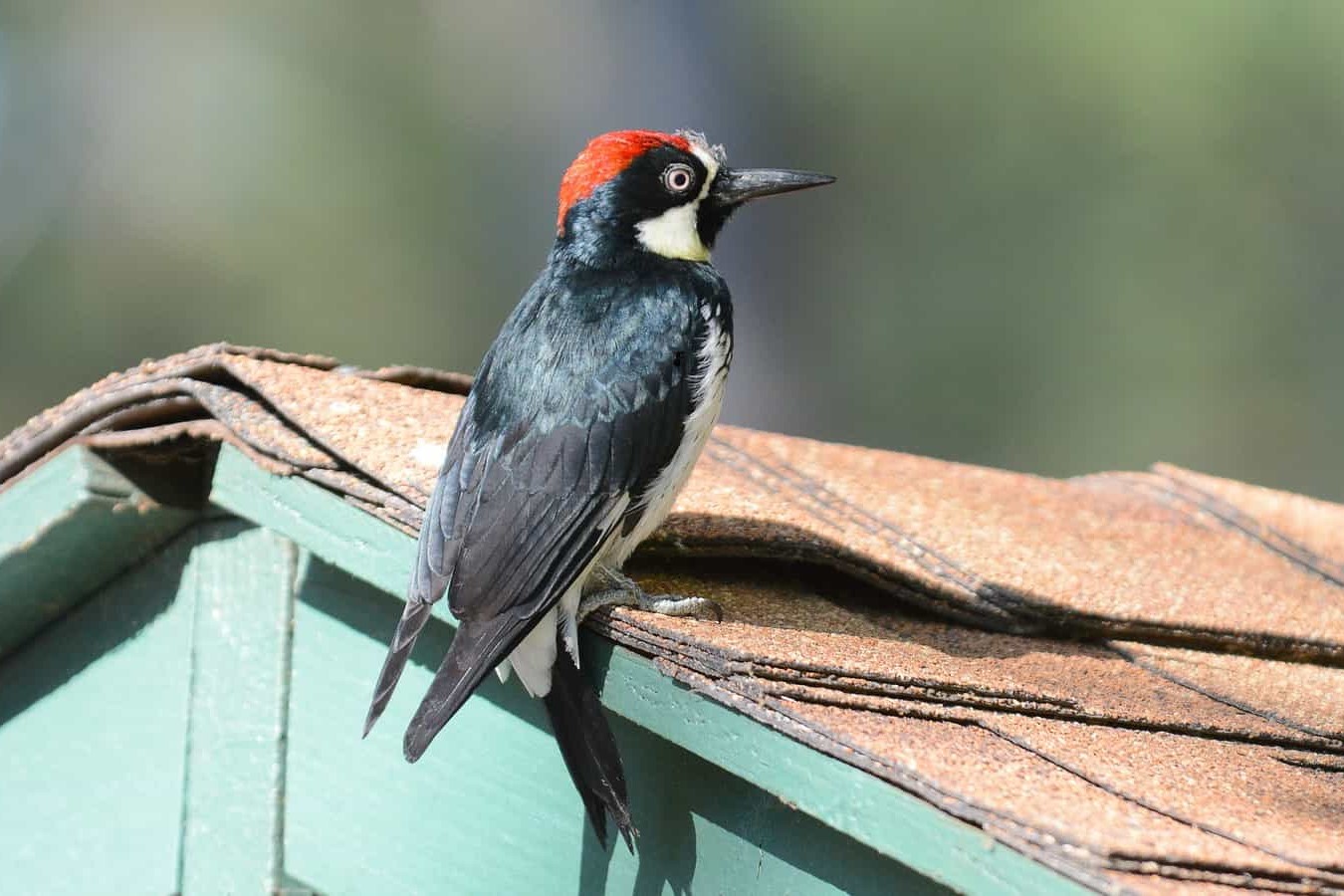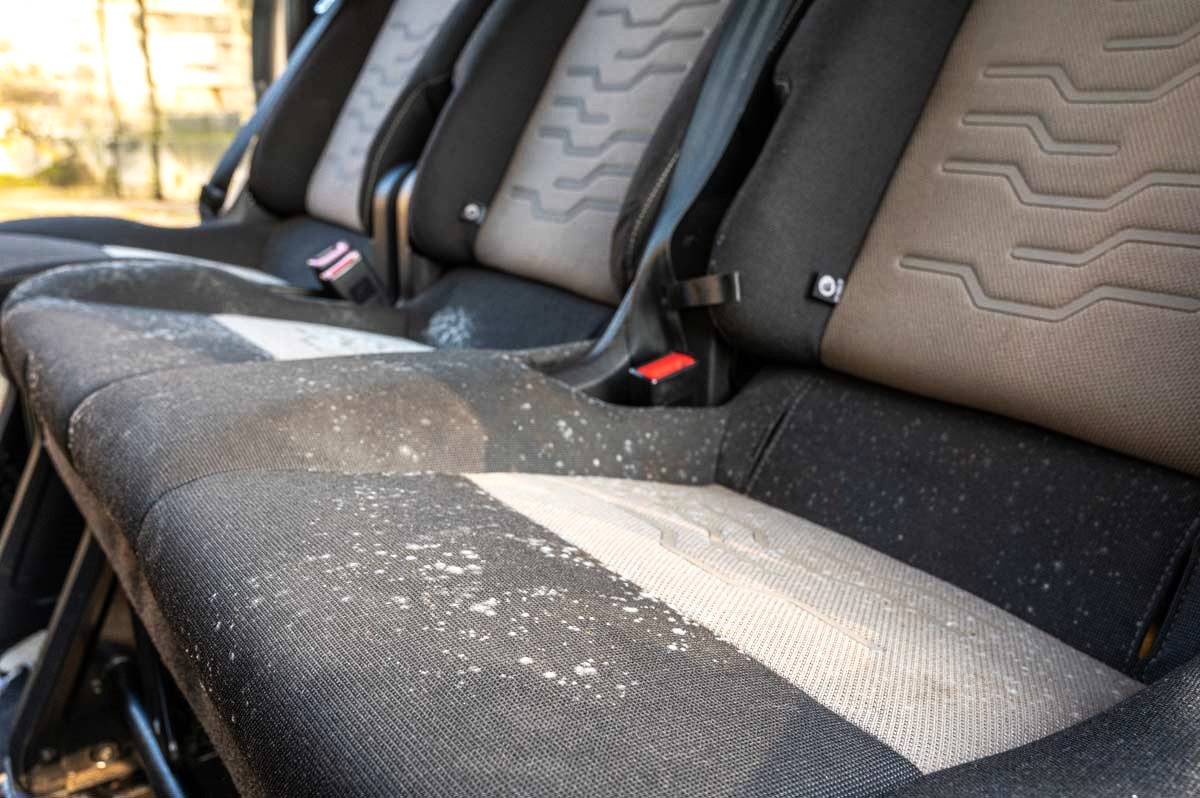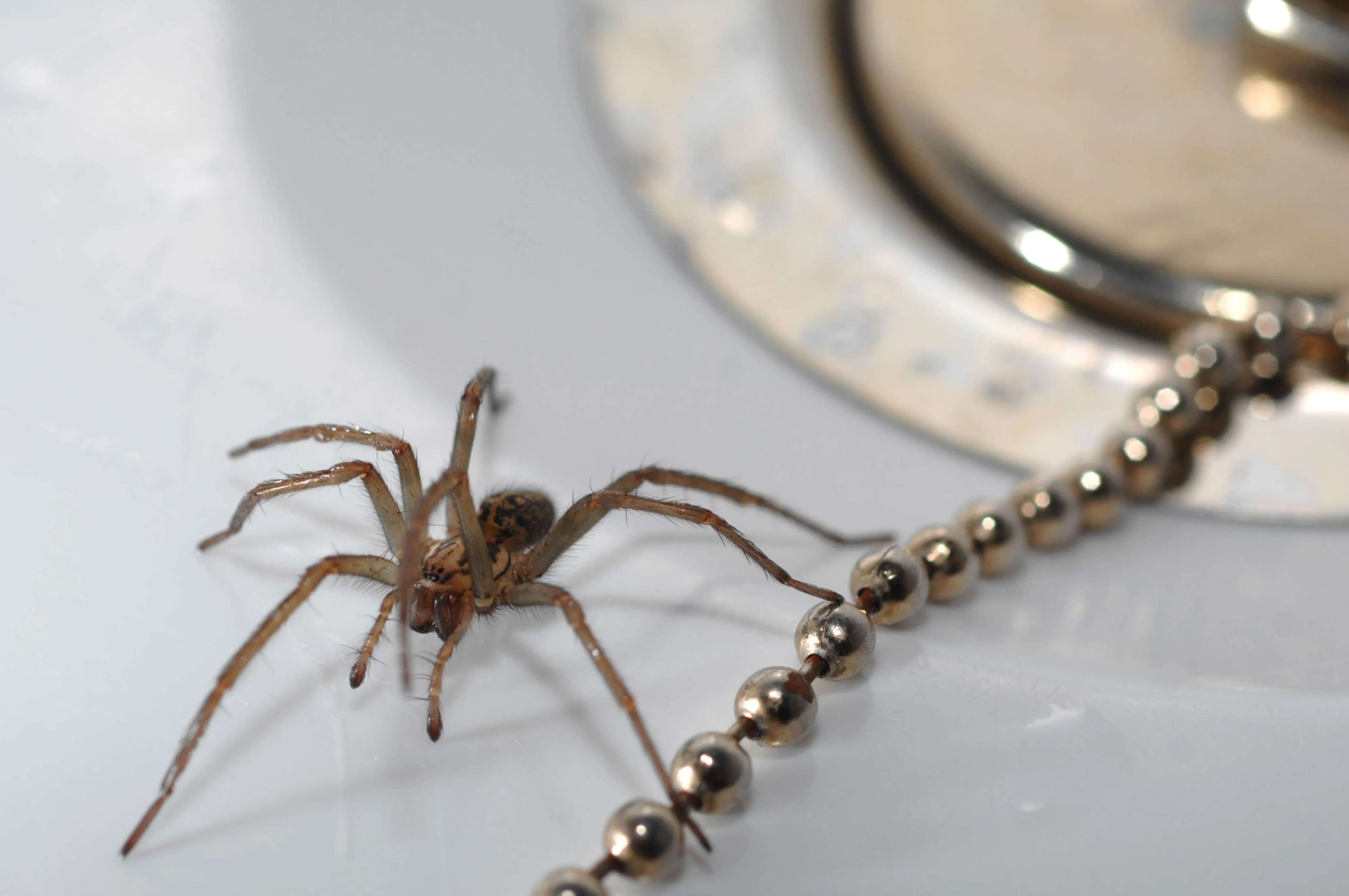Home>Home and Garden>How To Effectively Deter Woodpeckers From Damaging Your Property


Home and Garden
How To Effectively Deter Woodpeckers From Damaging Your Property
Published: March 7, 2024
Learn effective methods to deter woodpeckers from damaging your property with our expert tips and solutions. Protect your home and garden from woodpecker damage.
(Many of the links in this article redirect to a specific reviewed product. Your purchase of these products through affiliate links helps to generate commission for Noodls.com, at no extra cost. Learn more)
Table of Contents
Introduction
Woodpeckers are fascinating birds known for their distinctive drumming and pecking behavior. While their presence can add a touch of nature's beauty to your surroundings, woodpeckers can also become a nuisance when they start damaging your property. The relentless drumming and pecking on wooden surfaces, such as siding, eaves, and trim, can lead to structural damage and costly repairs. Understanding how to effectively deter woodpeckers from causing harm to your property is essential for maintaining a harmonious coexistence with these remarkable birds.
In this comprehensive guide, we will delve into the behavior of woodpeckers, the signs of woodpecker damage, and various strategies for deterring them from targeting your home. From natural and physical deterrents to sound and visual methods, we will explore a range of effective techniques to protect your property from woodpecker damage. Additionally, we will discuss the option of seeking professional help and the legal considerations associated with deterring woodpeckers.
By gaining insights into woodpecker behavior and implementing appropriate deterrents, you can safeguard your property while respecting the natural instincts of these captivating birds. Let's embark on this journey to discover practical and humane ways to mitigate woodpecker damage and create a peaceful environment for both humans and wildlife.
Understanding Woodpecker Behavior
Woodpeckers are remarkable birds with unique behaviors that distinguish them from other avian species. Understanding their behavior is crucial for effectively deterring them from causing damage to your property. Here are some key insights into woodpecker behavior:
-
Drumming and Pecking: Woodpeckers are known for their rhythmic drumming and pecking on various surfaces, including trees, wooden structures, and even metal gutters. This behavior serves multiple purposes, such as establishing territory, attracting mates, and searching for food. The rapid drumming sound is a form of communication that can carry over long distances, making it an effective way for woodpeckers to assert their presence.
-
Foraging Habits: Woodpeckers are primarily insectivorous, using their strong beaks to drill into wood in search of insects, larvae, and other invertebrates. They are also known to feed on sap, berries, and nuts. Their foraging habits often lead them to peck at wooden surfaces, as they can detect the presence of insects beneath the wood through their keen sense of hearing.
-
Nesting Behavior: Woodpeckers excavate cavities in trees or wooden structures to create nesting sites. These cavities serve as sheltered spaces for raising their young and provide protection from predators. The process of excavating a nesting cavity involves extensive pecking and chiseling, which can result in significant damage to the surrounding area.
-
Territorial Displays: Woodpeckers engage in elaborate territorial displays, which may involve drumming, vocalizations, and visual cues such as head bobbing and wing flashing. These displays are intended to establish and defend their territories, especially during the breeding season.
By gaining a deeper understanding of woodpecker behavior, you can develop effective strategies to deter them from causing damage to your property. Recognizing the reasons behind their drumming, pecking, and nesting behaviors enables you to implement humane and practical deterrents that respect the natural instincts of these captivating birds.
Identifying Woodpecker Damage
Identifying woodpecker damage is crucial for taking timely action to protect your property from further harm. Woodpeckers can leave distinct signs of their presence, and being able to recognize these indicators will enable you to address the issue effectively. Here are the key signs to look for when identifying woodpecker damage:
-
Pecking Holes: Woodpeckers create distinctive holes in wooden surfaces as they search for insects or establish nesting sites. These holes are typically cylindrical or rectangular in shape, varying in size depending on the woodpecker species and the purpose of the pecking. Fresh pecking holes may appear clean and have a light color, while older holes can show signs of weathering and discoloration.
-
Drumming Marks: The repetitive drumming of woodpeckers can leave visible marks on wooden siding, trim, or other surfaces. These marks may manifest as clusters of small indentations or irregular patterns, often accompanied by scattered wood chips or debris.
-
Excavated Nesting Cavities: During the breeding season, woodpeckers may excavate nesting cavities in wooden structures, such as eaves, fascia boards, or utility poles. These cavities are larger and more extensive than typical foraging holes, often exhibiting a distinct rectangular or oval shape with well-defined edges.
-
Scattered Wood Chips: As woodpeckers chisel and peck at wooden surfaces, they generate wood chips and debris that accumulate around the base of the affected area. The presence of scattered wood chips can indicate recent woodpecker activity and provide insights into the location and extent of the damage.
-
Sap or Insect Residue: In their quest for food, woodpeckers may cause sap to ooze from trees or wooden structures. Additionally, the presence of insect residue, such as frass or wood shavings, near pecking holes can indicate the woodpeckers' successful foraging efforts.
By being vigilant and observant, you can identify woodpecker damage early on and take proactive measures to deter further harm. Recognizing the distinct signs of woodpecker activity empowers you to implement appropriate deterrent strategies and protect your property from structural and aesthetic deterioration.
Natural Deterrents
Implementing natural deterrents can be an effective and environmentally friendly approach to deterring woodpeckers from causing damage to your property. By leveraging natural elements and strategic landscaping, you can create an environment that discourages woodpeckers from targeting your home. Here are several natural deterrent strategies to consider:
1. Habitat Modification:
Modifying the habitat around your property can make it less appealing to woodpeckers. Start by removing dead or infested trees, as these can harbor insects that attract woodpeckers. Additionally, prune overhanging branches and trim dense foliage near your home to reduce cover and make it more challenging for woodpeckers to access potential pecking sites.
2. Bird Feeders and Nesting Boxes:
Providing alternative food sources and nesting sites can divert woodpeckers' attention away from your property. Consider installing bird feeders filled with seeds and suet to attract woodpeckers to designated feeding areas away from your home. Similarly, offering nesting boxes designed for woodpecker species can entice them to establish nesting sites in more suitable locations.
3. Visual Deterrents:
Incorporating visual deterrents, such as reflective objects or predator decoys, can create a deterrent effect by startling woodpeckers and dissuading them from approaching your property. Hang reflective tape or CDs near potential pecking sites to create flashes of light and movement that disrupt woodpeckers' activities. Additionally, placing decoys of predatory birds, such as owls or hawks, in visible locations can create a perception of danger for woodpeckers.
4. Natural Scents and Repellents:
Certain scents and natural repellents can act as deterrents by making the environment less inviting for woodpeckers. Consider using essential oils with strong scents, such as peppermint or citrus, to create a repellent barrier around vulnerable areas of your property. Alternatively, hanging mesh bags filled with strong-smelling herbs, like thyme or lavender, near pecking sites can help deter woodpeckers through olfactory cues.
5. Native Plantings:
Strategically incorporating native plantings around your property can promote biodiversity and attract insects that serve as natural prey for woodpeckers. By creating a balanced ecosystem with diverse plant species, you can encourage woodpeckers to forage for insects in natural settings, reducing their reliance on pecking at your home.
By integrating these natural deterrent strategies, you can mitigate woodpecker damage while fostering a harmonious coexistence with these captivating birds. Embracing natural solutions not only protects your property but also contributes to the preservation of local wildlife and ecosystems.
Physical Deterrents
In addition to natural deterrents, implementing physical deterrents can provide an effective means of protecting your property from woodpecker damage. These strategies involve modifying the physical environment to create barriers that discourage woodpeckers from accessing and pecking at vulnerable surfaces. Here are several physical deterrent methods to consider:
1. Protective Coverings:
Installing protective coverings, such as hardware cloth or metal flashing, over susceptible areas of your property can act as a formidable barrier against woodpecker damage. These coverings can be affixed to eaves, fascia boards, and other wooden surfaces to shield them from woodpecker pecking. When selecting protective coverings, opt for durable materials that are resistant to pecking and weathering, ensuring long-term effectiveness.
2. Netting and Mesh Barriers:
Deploying netting or mesh barriers over specific sections of your property can deter woodpeckers from accessing potential pecking sites. Fine mesh netting can be installed around trees, utility poles, and other structures to prevent woodpeckers from reaching the underlying wood. Similarly, mesh barriers can be used to enclose vulnerable areas, such as attic vents and decorative wooden elements, effectively safeguarding them from woodpecker intrusion.
3. Siding Repairs and Reinforcements:
Addressing existing damage and reinforcing vulnerable siding can mitigate the risk of woodpecker activity. Repairing pecking holes and damaged siding promptly can prevent woodpeckers from expanding existing cavities. Additionally, reinforcing siding with sturdy materials, such as metal flashing or composite panels, can fortify vulnerable areas and deter further pecking attempts.
4. Visual Distractions and Obstructions:
Introducing visual distractions and obstructions near potential pecking sites can disrupt woodpeckers' activities and dissuade them from targeting your property. Hanging wind chimes, brightly colored streamers, or windsocks near susceptible areas can create visual disturbances that deter woodpeckers. Similarly, strategically placing physical obstructions, such as hanging baskets or decorative screens, can make it challenging for woodpeckers to access favored pecking locations.
5. Roosting and Perching Prevention:
Woodpeckers often use specific perching and roosting spots as launching points for their pecking activities. By installing physical deterrents, such as bird spikes or deterrent strips, on these roosting sites, you can discourage woodpeckers from lingering near your property. These deterrents create an inhospitable environment for woodpeckers, prompting them to seek alternative locations for perching and roosting.
By incorporating these physical deterrent strategies, you can fortify your property against woodpecker damage and create an environment that discourages woodpeckers from engaging in destructive pecking behavior. These proactive measures not only protect your home but also promote a peaceful coexistence with woodpeckers, allowing them to thrive in natural habitats without causing harm to human structures.
Sound and Visual Deterrents
Sound and visual deterrents offer innovative approaches to deterring woodpeckers from causing damage to your property. By leveraging auditory and visual stimuli, you can create an environment that discourages woodpeckers from engaging in pecking behavior while respecting their natural instincts. Here are several effective sound and visual deterrent methods to consider:
1. Ultrasonic Devices:
Ultrasonic devices emit high-frequency sound waves that are imperceptible to humans but can be disruptive to woodpeckers. By strategically placing ultrasonic emitters near vulnerable areas of your property, you can create an auditory deterrent that discourages woodpeckers from approaching and pecking at wooden surfaces. These devices offer a humane and non-invasive solution to mitigate woodpecker damage.
2. Scarecrow Sprinklers:
Scarecrow sprinklers, equipped with motion sensors, provide an effective visual and auditory deterrent by activating a sudden burst of water when woodpeckers approach. The unexpected spray startles woodpeckers, deterring them from targeting your property. This approach not only discourages pecking behavior but also contributes to water conservation, making it a practical and environmentally conscious deterrent method.
3. Visual Repellents:
Incorporating visual repellents, such as inflatable predator balloons or reflective tape, can create a deterrent effect by startling woodpeckers and disrupting their activities. Predator balloons, designed to resemble predatory birds, create a perception of danger for woodpeckers, prompting them to avoid the area. Similarly, hanging reflective tape or Mylar strips near pecking sites creates flashes of light and movement that deter woodpeckers from engaging in destructive behavior.
4. Decoy Predators:
Strategically placing decoy predators, such as owl or hawk decoys, in visible locations around your property can create a visual deterrent that dissuades woodpeckers from approaching. These decoys exploit woodpeckers' natural instinct to avoid potential threats, effectively deterring them from targeting your home. By rotating the placement of decoy predators, you can maintain the deterrent effect and prevent woodpeckers from acclimating to their presence.
5. Wind-Activated Devices:
Wind-activated devices, such as spinning pinwheels or fluttering flags, introduce dynamic visual stimuli that disrupt woodpeckers' activities and discourage them from pecking at your property. The movement and sound generated by these devices create an unpredictable and unsettling environment for woodpeckers, prompting them to seek alternative locations for foraging and territorial displays.
By integrating sound and visual deterrents into your woodpecker management strategy, you can effectively protect your property from damage while promoting a peaceful coexistence with these remarkable birds. These innovative deterrent methods offer humane and practical solutions that align with the principles of wildlife conservation and environmental stewardship.
Professional Help and Legal Considerations
Seeking professional assistance for woodpecker management can provide valuable insights and specialized solutions to address persistent woodpecker issues. When considering professional help, it is essential to engage with reputable wildlife management experts or pest control professionals who have experience in dealing with avian nuisance species. These professionals can conduct thorough assessments of your property, identify the underlying factors contributing to woodpecker activity, and develop tailored strategies to deter woodpeckers effectively.
Professional woodpecker management services may encompass a range of interventions, including habitat modification, installation of deterrent devices, and targeted exclusion methods. By leveraging their expertise, professionals can implement humane and environmentally responsible techniques to mitigate woodpecker damage while ensuring the well-being of these protected bird species.
In addition to seeking professional help, it is crucial to consider the legal implications associated with deterring woodpeckers. In many regions, woodpeckers are protected under wildlife conservation laws, such as the Migratory Bird Treaty Act in the United States. These laws safeguard woodpeckers and their habitats, imposing restrictions on the harassment, capture, or harm of these birds without proper authorization.
Before implementing deterrent measures or engaging in woodpecker management activities, it is advisable to familiarize yourself with the relevant wildlife protection regulations in your area. Obtaining the necessary permits or approvals, if required, demonstrates a commitment to compliance with wildlife conservation laws while addressing woodpecker-related concerns.
Furthermore, consulting with local wildlife authorities or conservation agencies can provide valuable guidance on navigating legal considerations and ensuring that woodpecker management efforts align with conservation objectives. By fostering open communication and collaboration with relevant authorities, you can pursue effective woodpecker deterrent strategies within the framework of legal and ethical responsibilities.
In summary, professional assistance from wildlife management experts can offer tailored solutions for deterring woodpeckers while upholding ethical and legal considerations. By engaging with knowledgeable professionals and adhering to wildlife protection regulations, you can address woodpecker-related challenges in a responsible and sustainable manner, contributing to the preservation of both your property and the natural habitats of these captivating birds.
Conclusion
In conclusion, effectively deterring woodpeckers from causing damage to your property requires a multifaceted approach that balances practical strategies with respect for wildlife conservation. By understanding woodpecker behavior and identifying signs of woodpecker damage, you can proactively implement deterrent measures that protect your home while promoting a harmonious coexistence with these captivating birds.
Natural deterrents, such as habitat modification, bird feeders, and visual repellents, offer environmentally friendly solutions that discourage woodpeckers from targeting your property. Leveraging the power of nature and strategic landscaping can create an environment that redirects woodpeckers' natural behaviors away from vulnerable structures.
Physical deterrents, including protective coverings, netting, and visual obstructions, provide tangible barriers that safeguard your property from woodpecker intrusion. These measures fortify vulnerable areas and minimize the risk of structural damage, contributing to the long-term preservation of your home.
Sound and visual deterrents introduce innovative methods, such as ultrasonic devices and scarecrow sprinklers, that disrupt woodpeckers' activities without causing harm. By incorporating auditory and visual stimuli, you can create an environment that dissuades woodpeckers from engaging in destructive pecking behavior while respecting their natural instincts.
Seeking professional help from wildlife management experts and understanding the legal considerations associated with woodpecker management are essential components of a comprehensive approach. Engaging with knowledgeable professionals and adhering to wildlife protection regulations ensures that woodpecker deterrent strategies are implemented responsibly and sustainably.
Ultimately, by integrating natural, physical, sound, and visual deterrents, along with professional guidance and legal awareness, you can effectively deter woodpeckers from damaging your property while fostering a deep appreciation for the intricate balance between human habitats and natural ecosystems.
In embracing these strategies, you not only protect your home from woodpecker damage but also contribute to the preservation of local wildlife and the conservation of these remarkable birds for generations to come.










